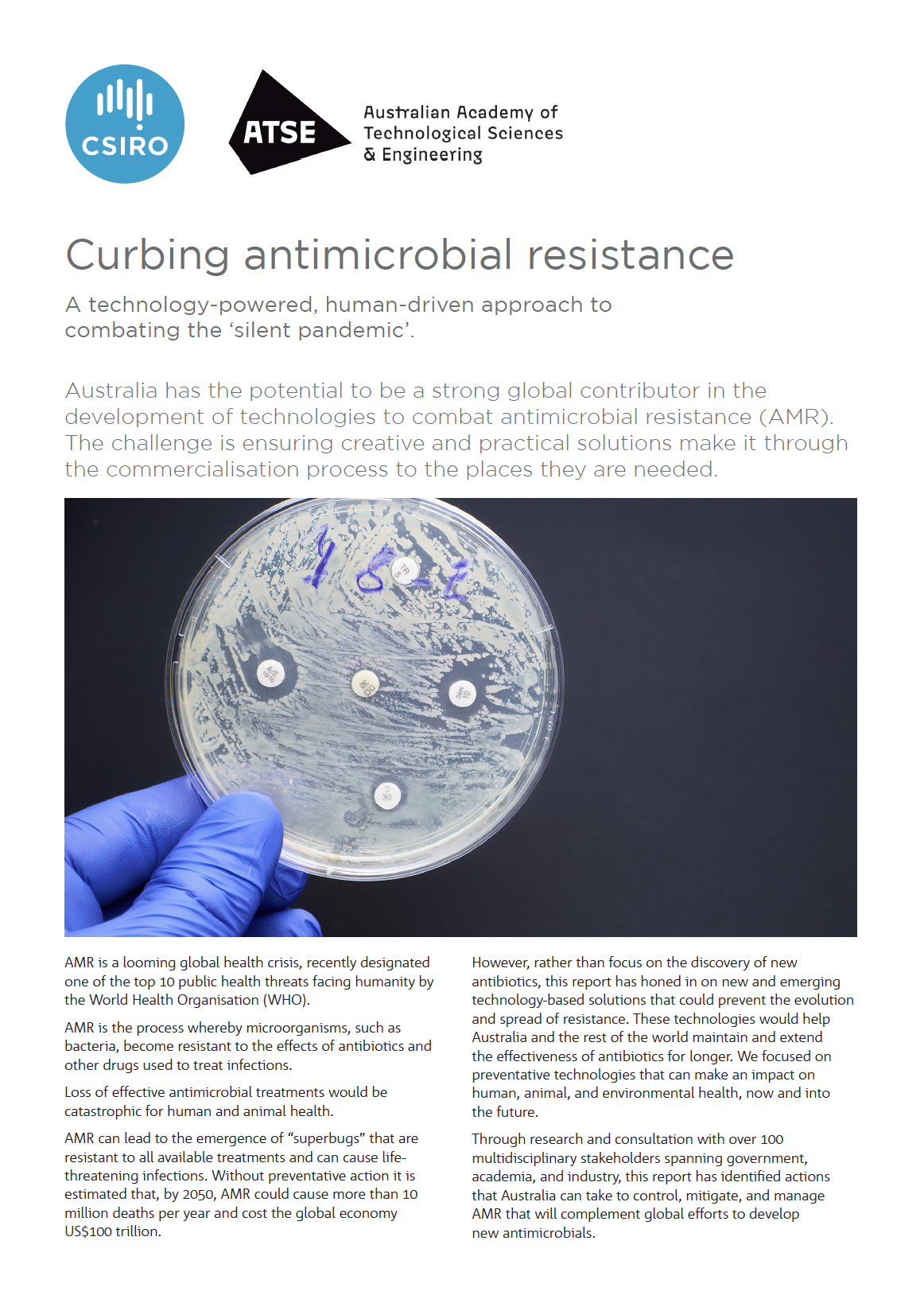Antimicrobial resistance (AMR) is a looming global health crisis, recently designated one of the top 10 public health threats facing humanity by the World Health Organisation (WHO).
AMR has the ability to render some of the most critical antimicrobial drugs ineffective. It can spread among microorganisms in health and agricultural settings, before making its way out into the environment and causing significant harm to human and animal hosts. Losing effective antimicrobial treatments against infections would be catastrophic for health. Without preventative action, it is estimated that by 2050 AMR would lead to 10 million people dying every year and cost the global economy US$100 trillion.
Through research and consultation with multi-disciplinary experts, this report has identified the key challenges and opportunities for Australia to improve prevention, detection, diagnosis, and response to drug-resistant infections and reduce the impacts of AMR. Consultations involved over 100 stakeholders spanning government, academia, and industry, and key technologies that could be used to reduce the prevalence and spread of AMR were identified.
Consultations also explored the barriers to implementation of the technology-based solutions, and key enablers to ensure they are able to make significant gains against AMR.
The message from stakeholders was clear – there is a lack of coordination in the efforts against the rise of AMR, significant data siloes across states and sectors, and a need to increase community understanding about the issues and impacts of AMR. A need to streamline and simplify pathways to market was also called out as a key requirement to enable technology-based AMR solutions to get to the places they are needed the most – both within healthcare settings, and beyond. The criticality for rapid technology solution development and deployment is exacerbated by the acceleration of AMR from the impacts of climate change, and need to better monitor and manage the current and emerging issues associated with increased AMR prevalence.
These challenges need to be overcome if Australia, and the world, is to get on top of the rising rates of AMR in the environment and the looming threat to global human and animal health.








